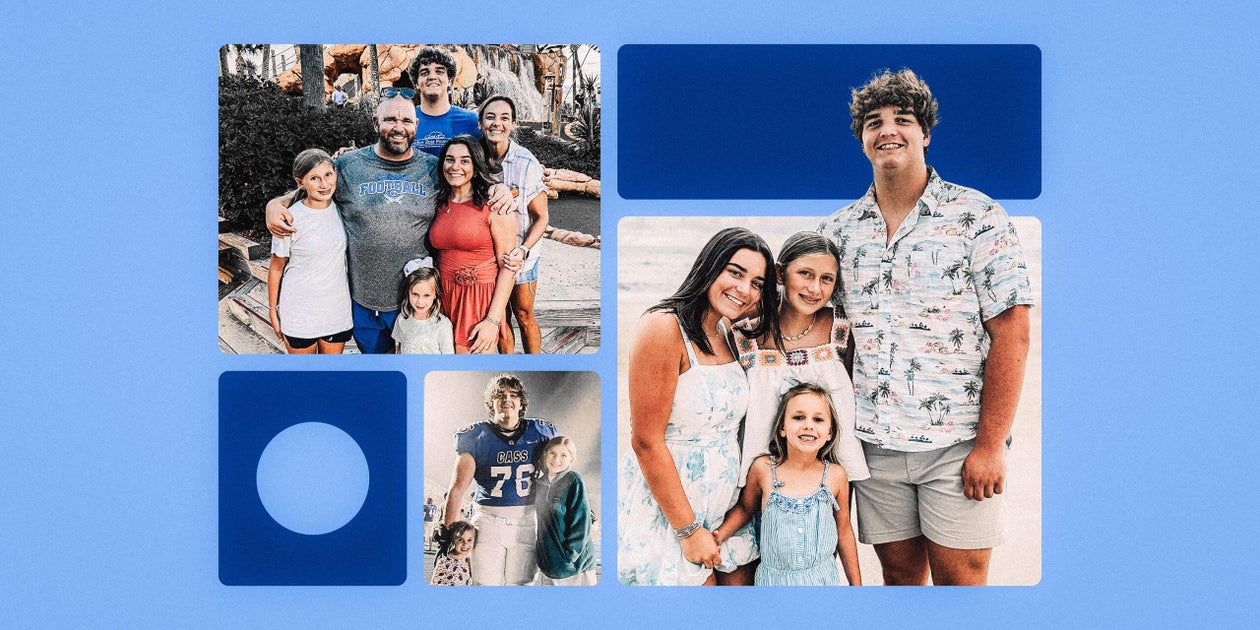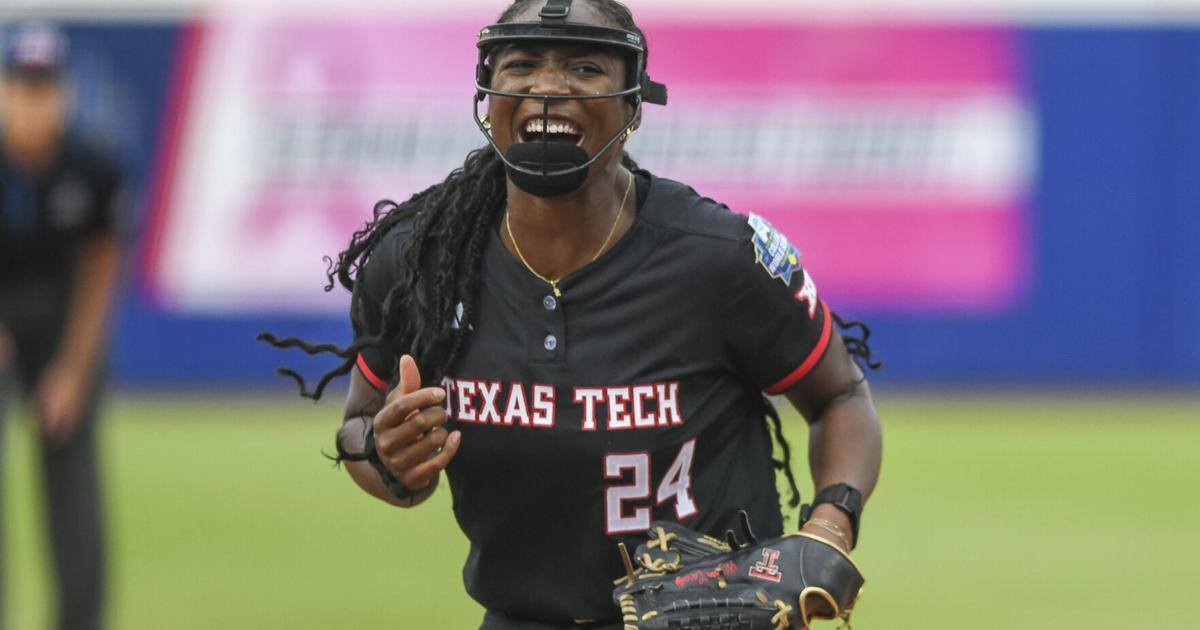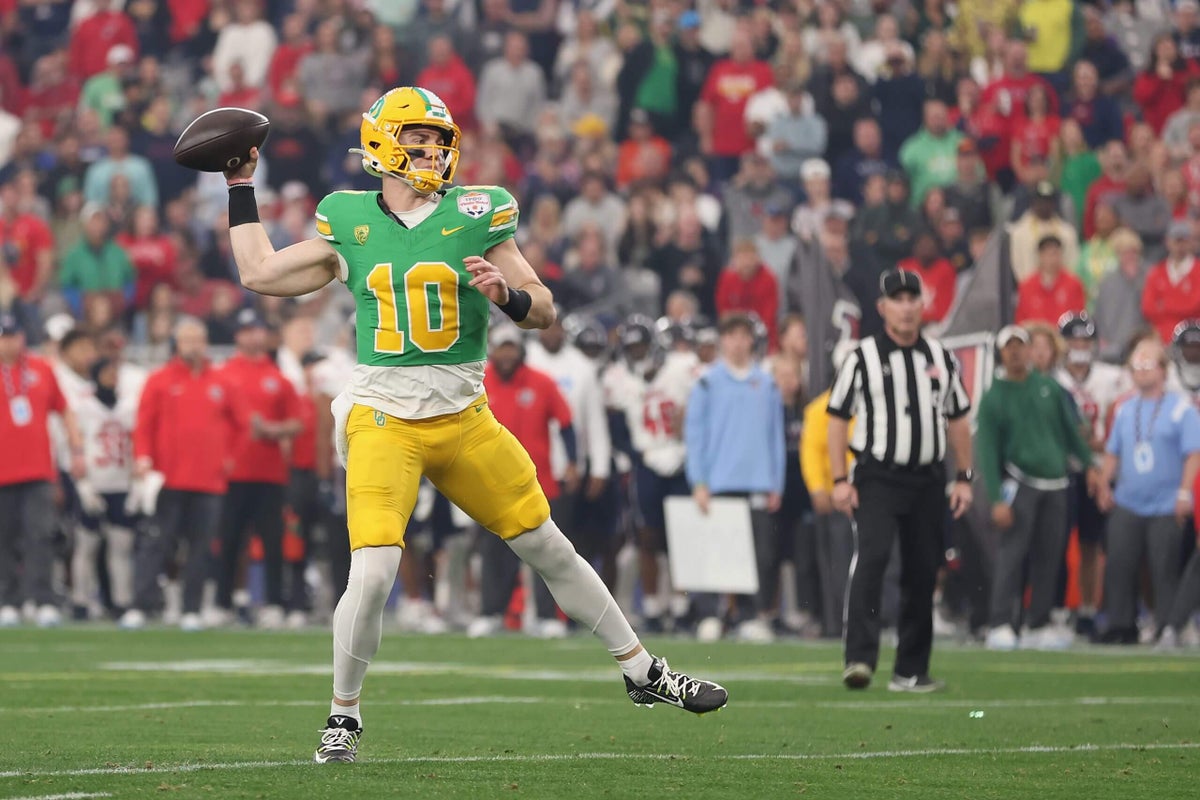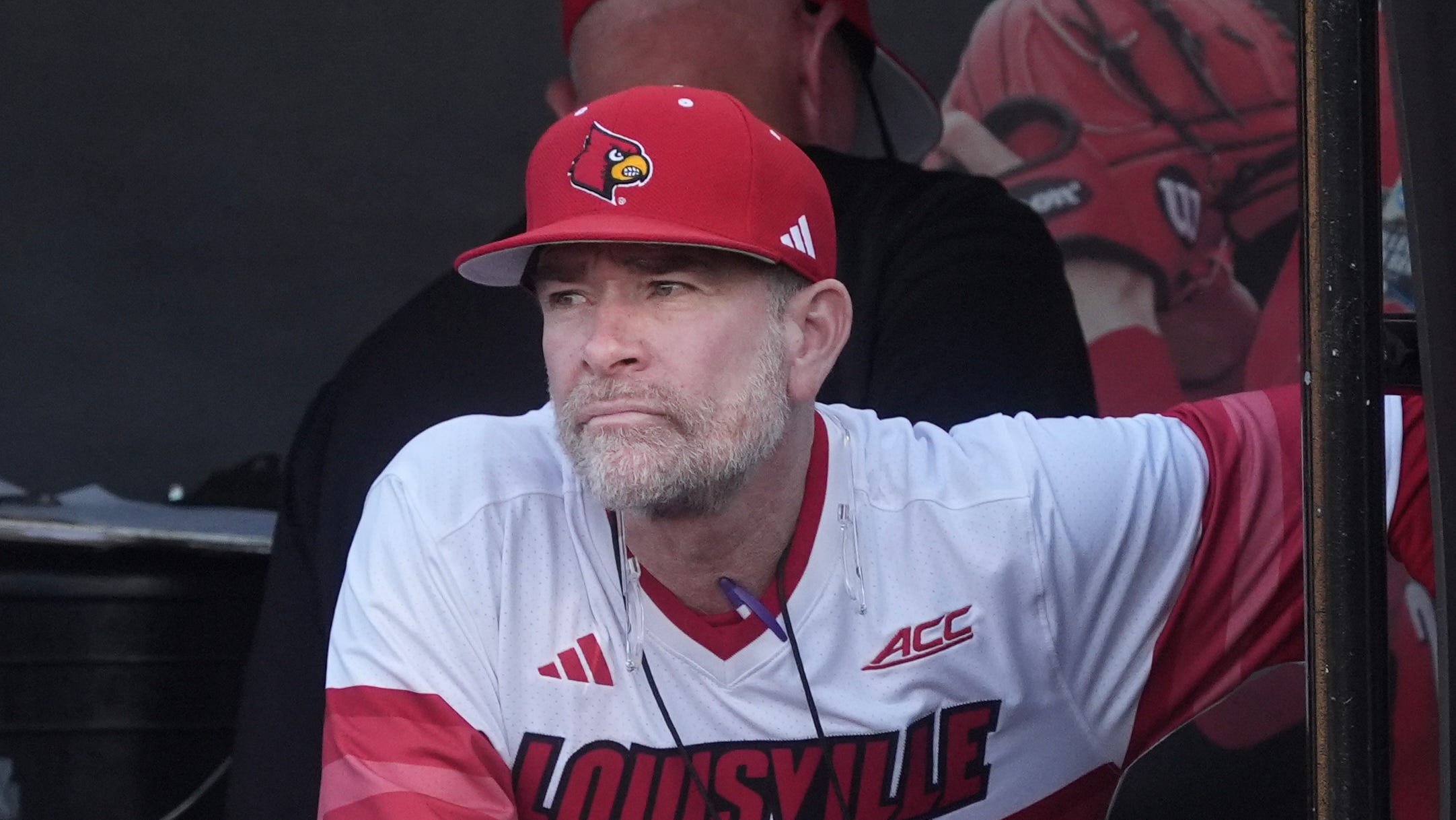When Bear McWhorter was in the third grade, his mother, Vanessa, and father, Josh, sat him down alongside his sister to discuss an important family matter.
The McWhorters had two happy and healthy children and a nice life in Cartersville, Ga., about 40 miles northwest of Atlanta. But the more Vanessa and Josh thought about the future — leaning into their faith for clarity — the more passionate they felt about the possibility of adding to their family.
How would Bear and Lily feel about the McWhorters fostering, and potentially adopting, children in need?
Bear, now 17 and a four-star offensive lineman who is committed to Michigan, was initially in a bit of shock. He’d always been the baby of the family and had never thought about what it might feel like to add another sibling, let alone share his space with a stranger. But he supported his parents’ desire to open their home. And in September 2017, right as he was about to head out for football practice, he met 4-year-old Olivia for the first time.
“We ended up getting her and didn’t know how long we were going to have her or anything like that,” Bear said, “and ended up just having her forever. I love her.
“It just ended up being a great thing for our entire family.”
Seven years later, the McWhorters are a family of six. They formally adopted Olivia in 2019 and began fostering 4-month-old Lydia in early 2020, before finalizing her adoption in 2022.
Olivia is now 12 and the family’s best distance runner, hoping to eventually follow in her brother’s footsteps and compete collegiately. Lydia is 5 and learning new big-kid words every day.
Bear, who committed to Michigan in February over Clemson, South Carolina, Alabama and Florida, told every coach who recruited him over the years about his family’s story. And in March 2024 — after years of brainstorming with Josh about how he might be able to use his name, image and likeness for good — he launched a foundation to raise money and awareness for adoption and fostering.
The Brother Bear Foundation. Because every child deserves a family.
“I got two new little sisters,” Bear said. “And (it) really changed my view on life.”
Vanessa McWhorter knew when she and Josh officially signed up to foster in the state of Georgia that reunification between a child and his or her biological family was the ultimate goal.
“But Olivia’s story was really hard,” Vanessa said. “When she came to us — and I won’t share much of her story — they kind of knew she most likely was going to need an adoptive home.”
Olivia, now a thriving, sassy preteen, was born in nearby Rome, Ga., about 15 minutes away from the McWhorters and had already bounced around multiple homes in the foster system before she started kindergarten. On the day she arrived at the McWhorter family home that fall 2017 afternoon, she walked through the doors and called Vanessa “Mom” right away. Shortly thereafter, the two met Josh for lunch at Chick-fil-A.
“She had never been around bigger men before,” Vanessa said of her husband, a former offensive lineman who played collegiately at Furman. “(She told him) ‘You’re as big as the sun.’”
Bear said hello for the first time before that football practice later that afternoon. The two talked for a few minutes and Bear went on his way — not remembering much else. But Vanessa and Josh paid close attention to how their biological children interacted with Olivia. They were touched by both Bear and Lily’s kindness.
“They took her on as a sibling super quick,” Vanessa said.
“They never treated her like she was any different,” Josh followed.
In hindsight, Bear acknowledges those first few weeks were an adjustment.
Olivia had different life experiences. Bear was shocked when she lashed out or snapped at his parents — something that never would have been tolerated from him or Lily. But even as a fourth grader, the more he learned about her past, the more he understood.
“It’s not all her fault,” he remembers thinking.
“Being in a great family, a great home, everything like that, where you’re taken care of, I think it’s definitely something that all of us take for granted.”
About two months into her stay with the McWhorters, Olivia turned 5.
As the new kid at school and church, she didn’t have many friends to celebrate with. So Bear and Lily jumped right in as built-in best friends when the McWhorter family took her to the local aquarium and commemorated her big day with a “Frozen”-themed birthday cake.
In March 2019, the whole family gathered in the courthouse when her adoption became final and Olivia legally became a McWhorter.
“It was awesome,” Bear said. “It was kind of surreal, adding somebody to the family like that. But it was really, really cool and definitely a very happy day.”
If he only knew the McWhorters were just getting started.
The McWhorter’s agency recommended that the family go “on hold” for six months after Olivia’s adoption became final. The idea is for family members to bond with one another and get accustomed to their new norm before introducing another child into the home.
Six months later, the agency called again: “Are y’all ready to reopen?”
Vanessa and Josh agreed to open their home once again, but decided the odds of adoption were slim this time around. They were happy to foster and be a resource for another family thinking about adopting, but their home was a little full. Adding a fourth child wasn’t part of their plans.
“Then it was in January, the end of January of 2020, it was right before COVID and I got a call for a 4-month-old little girl, and of course my heart just stopped,” Vanessa said. “Three hours later, we had a baby.”
Bear was confused when Vanessa picked him up from school that day with a baby seat in her car. Because of the quick nature of the call and how fast the situation unfolded, there was no time for the McWhorters to fill the children in on what was happening. Olivia initially thought her parents were surprising their children with a dog.
Bear saw the baby.
“Who’s this?” he asked.
“And that’s how he met Lydia,” Vanessa said.
A few weeks later, the COVID-19 pandemic broke out and the McWhorters’ initial plans of serving as short-term caregivers for Lydia changed.
With infants among those at the highest risk during the pandemic, Bear remembers how scared his family was about having a newborn in the home amid all of the uncertainty. Throw in the fact that he had almost no experience with newborns — “I never liked being around babies” — and his whole world shifted.
“But it ended up being really, really fun,” Bear said. “(Lydia) has the most personality, and she is the smartest little kid I’ve ever met. And so just being around her so much, it was really, really cool for me.”
While Bear navigated schoolwork and football throughout the pandemic, the now 6-foot-3 1/2, 293-pounder picked up a few new skills, too. He became a pro at changing diapers. He learned how to burp Lydia with ease and was happy to jump right in any time her tiny tummy got the best of her.
“Bless her heart, she spit up every bottle she took. She had awful, awful reflux,” Vanessa said. “But he’s just such a happy-go-lucky kid. He adjusted really, really well, and he had so much fun with her, especially in those baby months.”
Lydia provided some lightheartedness for the family, too.
“She’s just got an unbelievable personality,” Josh said. “Even as a baby, there was something different about her, and she’s sort of become the center of our family. She was the (pandemic) entertainment. That’s for sure.”
As Lydia aged from an infant to a toddler and soon was in need of a permanent home, the McWhorters got serious about officially adding her to the family.
In 2022, they gathered around the kitchen table to log into a Zoom call and sign some paperwork in front of the judge who virtually presided over Lydia’s adoption. Afterward, the family had a small get-together with their loved ones to celebrate their newest daughter and sister, two years in the making.
Last month, Vanessa walked into Lydia’s bedroom to tuck her youngest daughter in and read her a book, when Bear came in to join. He sat through story time, then stayed back after Vanessa left the room to tell his little sister goodnight. He’s constantly quizzing her on math problems or going over writing lessons, even teaching her a few of his and his teammate’s favorite potty-humor jokes along the way while she cracks up every time.
“I look at Bear,” Josh said, “and I just think, ‘Man, we hit the jackpot with him.’”
The idea for the foundation was born in Josh’s truck during the hour-long trip to and from Bear’s training sessions in Canton, Ga.
With two hours together three nights a week, father and son chatted about many of life’s bigger topics. When they started to think about how Bear might be able to use his platform as an emerging national recruit to make some sort of a difference, they kept coming back to adoption.
“It was part of our family’s story, it was a part of his story. He loved his sisters,” Josh said. “And he wanted to create a way for other people to be able to experience that same joy.”
High school athletes in Georgia are allowed to profit off their name, image and likeness, and through his foundation, Bear sells “Brother Bear” T-shirts for about $25, with 100 percent of the proceeds going directly toward helping families foster and/or adopt. During his recruitment, several coaches, including South Carolina’s Shane Beamer and assistants from LSU and Arkansas, snapped photos with their shirts.
The vast majority of the funds raised by The Brother Bear Foundation, for now, are coming from T-shirt sales, but the operation could grow considerably as Bear’s profile increases over the next few years.
“We’ve not gone out and asked for donations,” Josh said, “even though we’re legally able to, until we know exactly where we’re going with this and who’s doing what.”
Later this summer, if all goes according to plan, Bear will meet a baby girl from Ghana whom he helped bring to the States — his $2,000 contribution helping the family with the costs.
“Seeing all the hard work and everything I’ve done to get to this position in football and (to) have this platform and be able to turn around and use it for something like that, it’s really, really cool,” he said. “I just hope that people realize that they can do it, too. They can open their home.”
Josh, who works in finance, has made it clear that he and Vanessa will take care of the business side of things. It’s Bear’s job to use his platform to promote the foundation, invest in it himself and perhaps most importantly, do his part on the football field. The latter should be feasible for Bear, who is named after Josh but goes by Bear after Alabama legend Bear Bryant as a nod to his grandfather’s extreme Crimson Tide fandom. (Don’t worry, Grandpa has since come around on the Wolverines.)
In the meantime, Bear has one final summer at home, one last football season at Cass High before it’s off to Michigan. He plans to soak up every second and take what he has learned from his family with him to Ann Arbor.
Playing offensive line for the Wolverines, he said, may not be all that different from his role as brother to Lily, Olivia and Lydia.
“It’s a lot of protection and setting everybody straight,” he quipped.
“Opening up your home and your family to just welcome somebody that needs it — I just feel like it doesn’t get any better than that.”
(Illustration: Dan Goldfarb / The Athletic; Photos courtesy of the McWhorter family)





























































